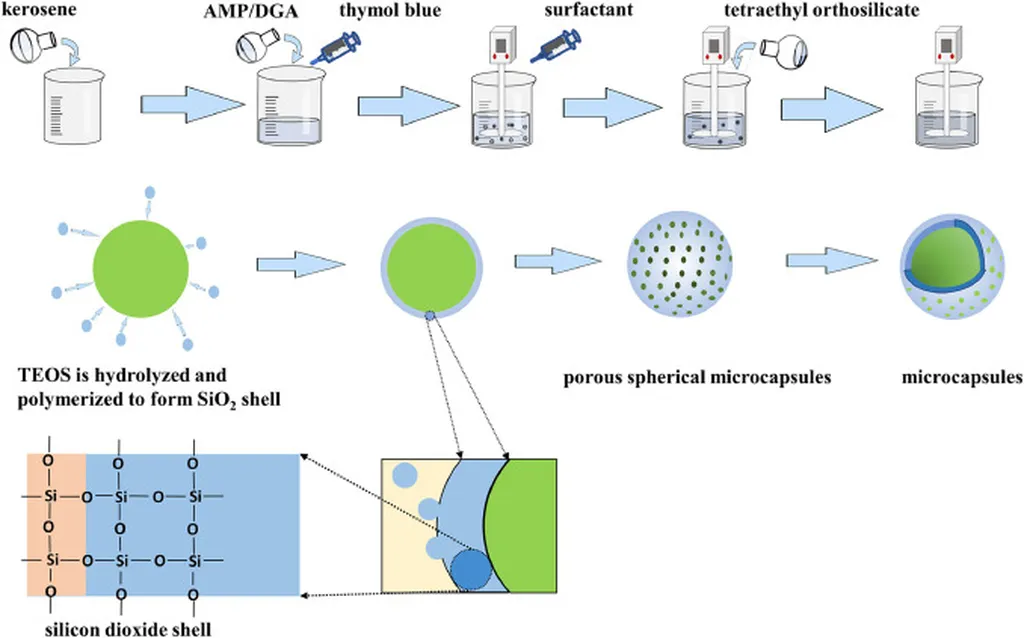In a significant stride towards enhancing carbon capture technologies, researchers have developed a novel approach using amine-based microcapsules that promise high capacity, stability, and recyclability. This breakthrough, published in the journal *Results in Engineering* (translated from the original title), addresses some of the persistent challenges in carbon capture, utilization, and storage (CCUS), particularly the issues of corrosivity, evaporative losses, and fouling associated with traditional amine-based methods.
The study, led by Xinhang Zhang from the Key Laboratory of Applied Surface and Colloid Chemistry at Shaanxi Normal University in Xi’an, China, introduces two types of microcapsules: 2-amino-2-methyl-1-propanol microcapsule (AM) and diethylene glycol amine microcapsule (DM). These microcapsules, prepared using interfacial polymerization, exhibit remarkable thermal stability, with decomposition temperatures of 215°C and 250°C, respectively. Their particle sizes range from 200-350 μm for AM and 10-20 μm for DM, making them versatile for various industrial applications.
One of the most compelling aspects of this research is the microcapsules’ exceptional CO2 adsorption capacity. The AM microcapsules can adsorb 0.97 mmol/g of CO2, while the DM microcapsules achieve an impressive 3.46 mmol/g. “This high adsorption efficiency not only makes the process more effective but also more economical,” Zhang explains. The microcapsules can be recycled up to 60 times without significant loss of performance, a feature that could drastically reduce the operational costs in industrial settings.
Moreover, the microcapsules maintain their adsorption capacity even at low temperatures, down to -30°C. This characteristic is particularly valuable for industries operating in colder climates or those dealing with low-temperature exhaust gases. “The ability to capture CO2 efficiently at such low temperatures opens up new possibilities for applications in various sectors, including power generation and manufacturing,” Zhang adds.
The commercial implications of this research are substantial. The energy sector, in particular, stands to benefit from more efficient and cost-effective carbon capture technologies. By reducing the environmental impact of industrial processes, these microcapsules could help companies meet stringent regulatory requirements and contribute to global efforts to mitigate climate change.
The study also highlights the potential for further advancements in the field. As Zhang notes, “The versatility and stability of these microcapsules suggest that they could be adapted for use in other areas, such as gas separation and purification.” This opens the door to a broader range of applications, from environmental remediation to industrial process optimization.
In conclusion, the development of amine-based microcapsules for CO2 capture represents a significant step forward in the quest for sustainable and efficient carbon management. With their high capacity, stability, and recyclability, these microcapsules offer a promising solution to some of the most pressing challenges in the energy sector. As research in this area continues to evolve, the potential for even greater advancements in carbon capture technologies becomes increasingly apparent.

